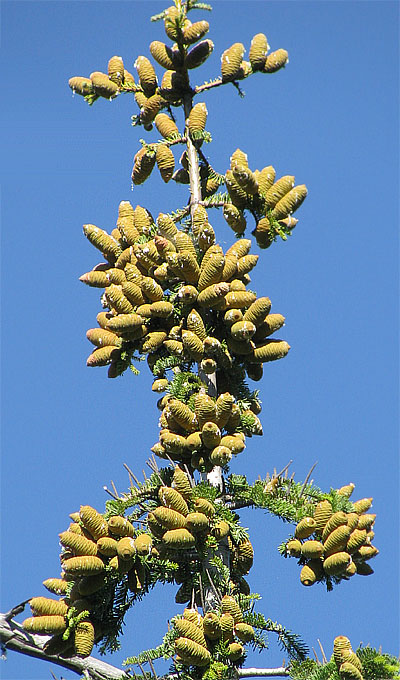Excerpts from Jim Conrad's
Naturalist Newsletter
from the August 30, 2009 Newsletter, issued from the Siskiyou Mountains west of Grants Pass, Oregon:
A TOP-HEAVY FIR
Often I've referred to the abundant Douglas-Firs, genus Pseudotsuga, in the forest around my trailer. Douglas-Firs are not "true firs," for "true firs" belong to the genus Abies. At about 1500 feet in elevation the trailer forest appears to be too low for true firs. However, near Onion Mountain at about 4000 feet, here and there in isolated little coves sometimes true firs turn up, and during my hike this week they were doing something spectacular, seen below:

Atop the trees, resin-dripping immature cones were weighing down branches with their sheer numbers. Right below the cone-laden branches in the picture the cones thinned out, and then the bottom 4/5ths of the trees were absolutely coneless. Notice that fir cones, instead of dangling from branches as they do on such species as pines, spruces and hemlocks, stand upright.
I'm told that four fir species are found in this area, though distribution maps I've seen show Onion Mountain outside the range for each. Supposedly the species here hybridize with on another. Based on the facts that leaves of the tree in the picture bore silvery lines of stomata only on their lower surfaces, and the trees' trunks were pale gray (silvery), I'm thinking that the species in the picture is the Pacific Silver Fir, ABIES AMABILIS, distributed from southeastern Alaska through here to northwestern California.
When the cones of Pacific Silver Firs mature they disintegrate on their branches, leaving slender, upright cone axes. In the picture on the lower branches you can see many of last year's naked cone axes still pointing skyward.